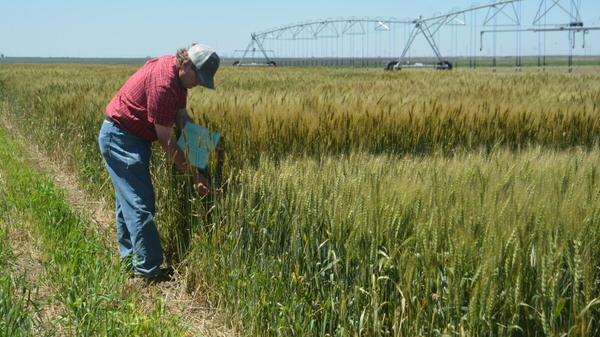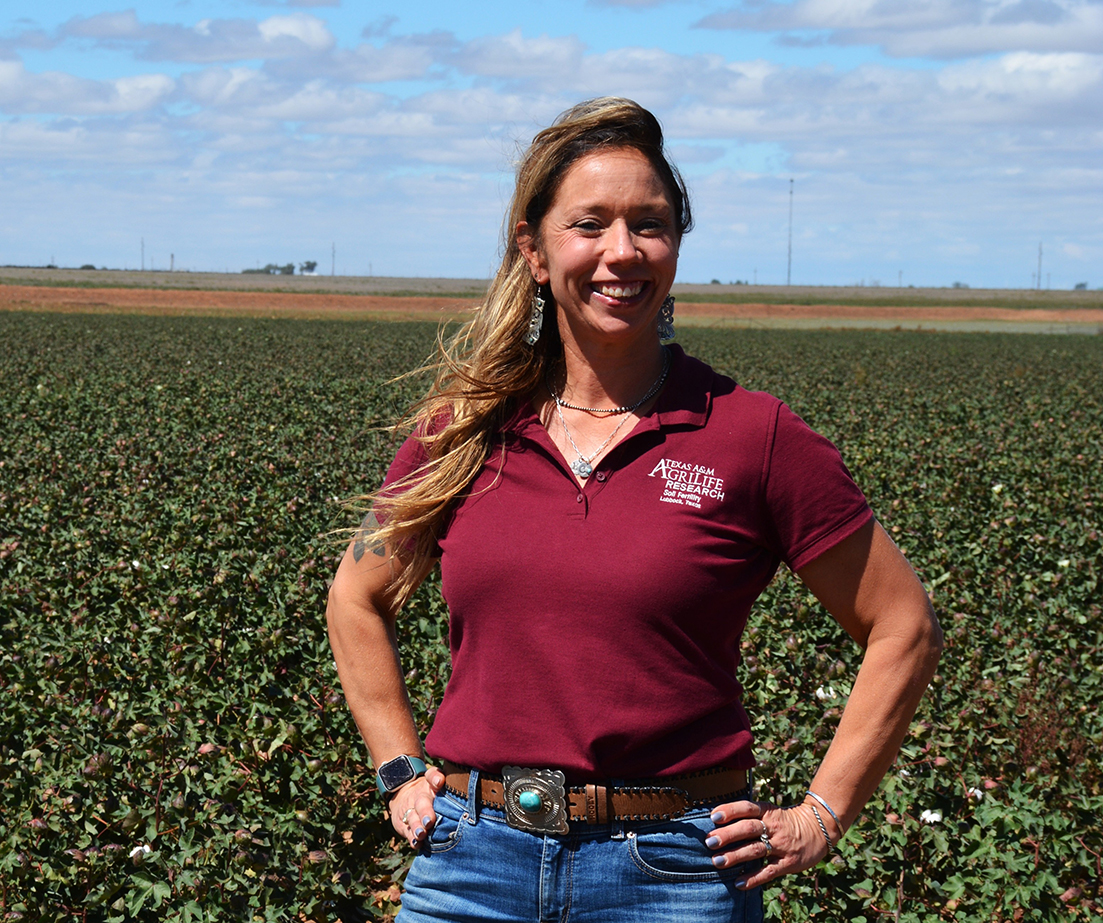From drought to rust, Texas A&M wheat breeders prepare for the elements
Writer: Kay Ledbetter, 806-677-5608, [email protected]
Contact: Dr. Jackie Rudd, 806-677-5600, [email protected]
Dr. Amir Ibrahim, 979-845-8274, [email protected]
AMARILLO – The wheat breeding program in Texas is very diverse, and Texas A&M AgriLife Research scientists learn something every year from the changing environment. For the past four years, it was about drought; this year, with the moisture, it’s about rust.
“We have to test a lot of environments,” said Dr. Jackie Rudd, AgriLife Research wheat breeder in Amarillo. “Before we release a new variety, it has been through at least 50 different environments.
“We learn something new every year. The last four years have been very dry and we gained a lot of information on drought tolerance. This year, however, we’ve been able to gain information on leaf rust, stripe rust and stem rust under the wetter conditions.”

Rudd said the environmental differences from College Station all the way north to Amarillo provide more diversity than throughout the rest of the Great Plains region, “so that’s really why our varieties are so adaptable to different areas.”
Dr. Amir Ibrahim, AgriLife Research wheat breeder in College Station, said wheat rusts, which are caused by a fungus, have a bulls’-eye target over Texas. The fungus can overwinter in much of the state because it doesn’t usually get cold enough to kill it.
“This year we’ve learned a lot, continue to learn a lot, about how our varieties respond to rust,” Rudd said. “We almost always have rust somewhere in Texas, but this year there’s not a field in Texas that I’ve experienced that has not been affected by at least one of these.”
Ibrahim said the first cases of rust this year showed up in the southern wheat growing regions as early as January, and Rudd said the stripe rust started showing up on wheat in the High Plains about three to four weeks ago.

Many producers sprayed for the fungus or they were growing a resistant variety, something both wheat breeders said has been good to demonstrate this year.
“That’s what has been a major value this year to the breeding program, seeing the varieties that have showed high resistance to stripe rust, such as TAM 114 here in the High Plains,” Rudd said. “It remained green with leaves in many cases when varieties such as TAM 112, which we know is very susceptible to stripe rust, had leaves drying up and will certainly have a reduced yield.”
If the stripe rust had come in earlier, it could have been a lot worse on some varieties in the High Plains, he said. The timing of the rust this year could mean grain fill will be a little less, but if fields lost the flag leaf to the fungus, there could have been up to 20 percent yield loss.

“The cool wet May that we had increased the fungus, but the 90 degree days that we are having now should reduce the spread of the stripe rust,” Rudd said.
Ibrahim said they have recently released a cultivar of winter wheat – TAM 305 – that is resistant to stem and leaf rust. Adult plants are resistant to stripe rust as well.
“With this adult plant resistance, there may have been some symptoms in the field, but those symptoms did not spread very fast and the yield loss was minimal,” he said.
Ibriham said this year’s rust nursery at Castroville was the most interesting he has seen a that location. It has been raining continuously, and cooling and warming throughout the season there.
“This was perhaps shifting the disease agents’ dynamics and overwhelming the leaves with drying and new infections,” he said. “Leaves of susceptible germplasm were overwhelmed with a combination of stripe rust that came early, leaf rust, bacterial leaf streak and septoria.”
Ibrahim also indicated that these conditions provided an incredible opportunity to all U.S. Great Plains programs evaluating material at Castroville to make progress against a plethora of fungal and bacterial diseases.
Rudd said it is good for the breeding program to be able to see the rusts under field conditions.
“This really highlights the value of resistance, which is something our breeding program has been strongly working towards,” he said. “The majority of our new wheat varietal releases are leaf rust, stem rust and stripe rust resistant.”

Both Rudd and Ibrahim pointed out how important that is, not just for Texas producers, but wheat producers across the Great Plains.
Ibrahim said as Texas warms, the rust spores begin to germinate and can be blown by the wind to states like Oklahoma, Nebraska, Kansas and the Dakotas. If the spread of rusts isn’t controlled in Texas, wheat crops across the continent can be affected.
“We develop a lot of the inoculum that spreads throughout the Great Plains with wheat crop progression,” Rudd said. “We are pleased with our progress and what we are seeing here, but we need to remain vigilant. There are many forms of the rust fungus out there, and we as wheat breeders need to ‘up our game’ to stay ahead.”






